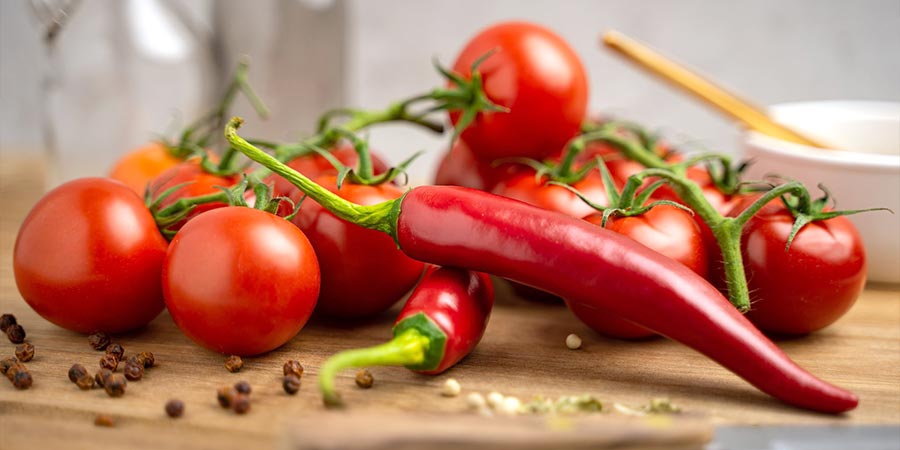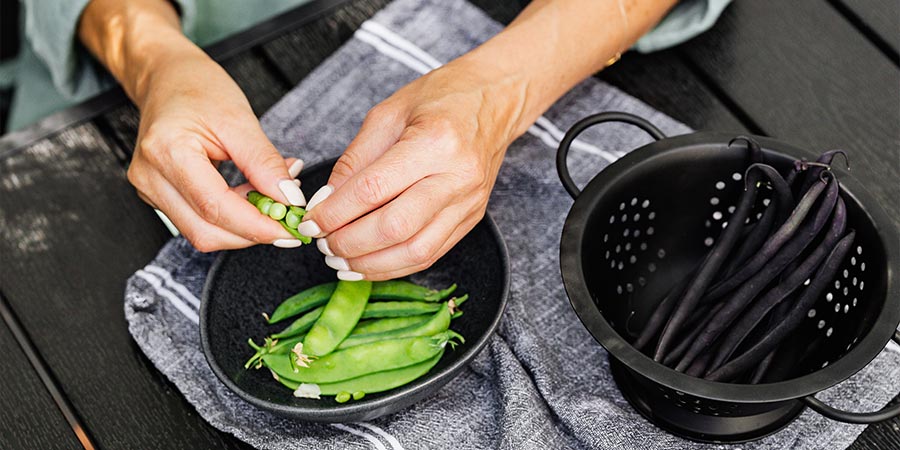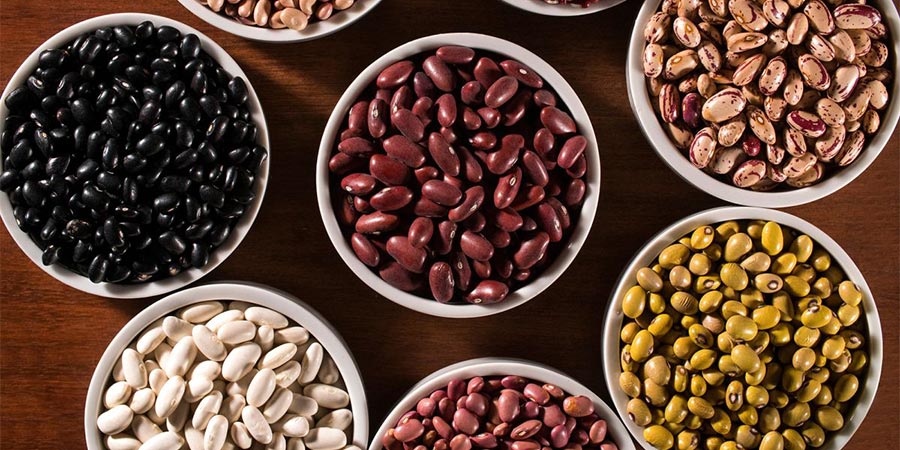Table of Contents
What are Lectins?
Lectins are a type of protein found in many plant-based foods. They are also known as carbohydrate-binding proteins because they bind to specific sugars on the surface of cells. Lectins are thought to play a role in protecting plants from pests, but they can also have a negative impact on human health when consumed in large amounts.
In humans, lectins can bind to the lining of the gut and interfere with nutrient absorption. They can also activate the immune system and cause inflammation. Some lectins are toxic to humans and can cause serious health problems if consumed in large amounts.
In this article, we will discuss what lectins are, which foods contain them, their health effects, and why some people choose to avoid them.
Foods Containing Lectins
Lectins are found in many plant-based foods, but some contain higher levels than others. Here are some of the most common sources of lectins in the diet:
- Beans and Legumes: Beans and legumes, such as kidney beans, lentils, and chickpeas, are high in lectins. These lectins are resistant to cooking and can survive the digestive process intact.
- Grains: Wheat, barley, and other grains contain lectins in the outer layer of the grain. This is why many lectin-free diets exclude gluten-containing grains.
- Nightshade Vegetables: Tomatoes, peppers, and eggplants are part of the nightshade family of vegetables and contain lectins. These lectins are concentrated in the seeds and skin of the vegetables.
- Dairy: Some dairy products, such as cheese and milk, contain lectins. However, the lectin content in dairy is generally lower than in plant-based foods.
- Nuts and Seeds: Nuts and seeds, such as peanuts, cashews, and sunflower seeds, contain lectins. These lectins are generally found in the skin or outer layer of the nut or seed.

5 Health Effects of Lectins
Lectins can have both positive and negative effects on health, depending on the amount consumed and the individual’s sensitivity. Here are some of the ways that lectins can affect health:
- Nutrient Absorption: Lectins can bind to the lining of the gut and interfere with nutrient absorption. This can lead to deficiencies in vitamins and minerals, which can affect overall health.
- Inflammation: Lectins can activate the immune system and cause inflammation. Chronic inflammation has been linked to a range of health problems, including heart disease, diabetes, and cancer.
- Digestive Issues: Lectins can cause digestive issues, such as bloating, gas, and diarrhea. This is because they can interfere with the digestion of carbohydrates and cause fermentation in the gut.
- Autoimmune Disease: Some lectins are known to mimic the structure of human cells, which can trigger an autoimmune response. This occurs when the immune system mistakenly attacks healthy cells in the body, leading to autoimmune diseases such as rheumatoid arthritis, lupus, and celiac disease.
- Toxicity: Some lectins, such as those found in raw red kidney beans, are toxic to humans and can cause nausea, vomiting, and diarrhea. In severe cases, they can lead to kidney failure and even death.
Why Some People Avoid Lectins
Given the potential health risks associated with lectins, some people choose to avoid them altogether. This has led to the rise of lectin-free diets, which exclude foods that are high in lectins. Proponents of these diets claim that they can improve gut health, reduce inflammation, and promote weight loss.
On the other hand, excluding lectin-containing foods from the diet can lead to nutrient deficiencies. Many of the foods that are high in lectins, such as beans and legumes, are also good sources of protein, fiber, and other nutrients.
5 Interesting Researches on Lectins
- Lectins and autoimmune diseases: A review published in the Journal of Autoimmunity found that lectins may play a role in the development of autoimmune diseases, such as rheumatoid arthritis and celiac disease. The authors suggest that lectins can trigger an immune response and lead to the development of autoantibodies.
- Lectin intake and colorectal cancer risk: A study published in the Journal of Nutrition found that a diet high in lectins was associated with a lower risk of colorectal cancer in men. The authors suggest that lectins may have a protective effect on the colon.
- Lectins and gut health: A study published in the British Journal of Nutrition found that lectins may have a prebiotic effect on the gut microbiome. The authors suggest that lectins can promote the growth of beneficial gut bacteria, which may have positive effects on overall health.
- Lectins and insulin resistance: A study published in the Journal of Clinical Endocrinology & Metabolism found that a diet high in lectins was associated with improved insulin sensitivity in overweight and obese individuals. The authors suggest that lectins may play a role in regulating blood sugar levels.
- Lectin elimination diets and weight loss: A study published in the International Journal of Obesity found that a lectin elimination diet was effective for promoting weight loss in overweight and obese individuals. The authors suggest that eliminating lectins from the diet may lead to a reduction in inflammation and improved gut health, which can promote weight loss.
Lectin Content in Common Foods
| Food | Lectin Content (Raw) | Lectin Content (Cooked) | Method of Preparation |
|---|---|---|---|
| Kidney beans | 20,000-70,000 IU/g | 200-400 IU/g | Soaking and boiling for 10-15 min |
| Lentils | 30,000-60,000 IU/g | 30-40 IU/g | Soaking and boiling for 10-15 min |
| Chickpeas (garbanzo beans) | 13,000-30,000 IU/g | 2,000-3,000 IU/g | Soaking and boiling for 1-2 hrs |
| Peanuts | 0-15,000 IU/g | 0-1,000 IU/g | Roasting or boiling for 30 min |
| Soybeans | 20,000-135,000 IU/g | 1,000-5,000 IU/g | Soaking and boiling for 3 hrs |
| Wheat | 30-120 IU/g | 0-10 IU/g | Cooking or fermenting |
| Quinoa | 0-60 IU/g | 0-10 IU/g | Soaking and cooking for 10-15 min |
| Tomatoes | 0-2,500 IU/g | 0-100 IU/g | Cooking or fermenting |
| Eggplant | 300-1,000 IU/g | 200-500 IU/g | Cooking or fermenting |
| Potatoes | 0-1,500 IU/g | 0-200 IU/g | Cooking or fermenting |
As seen in the table, the lectin content in different foods can vary greatly, both raw and cooked. Soaking and boiling beans and legumes for a certain amount of time can significantly reduce their lectin content. Roasting or boiling peanuts for 30 minutes can also reduce it. Cooking or fermenting grains and nightshade vegetables also helps.
Lectins are not always harmful and that moderate consumption of lectin-containing foods can be part of a healthy and balanced diet.

Pressure Cooking Can Reduce Lectin Content in Foods
Pressure cooking has been suggested as a way to reduce lectin content in foods, particularly beans and legumes. Pressure cooking is a high-heat, high-pressure cooking method that can break down lectins and make them more digestible. It may not completely eliminate all lectins though.
Research studies have shown that pressure cooking can significantly reduce lectin content in beans and legumes. For example, one study found that pressure cooking kidney beans for 30 minutes reduced lectin content by up to 90%. Another study found that pressure cooking chickpeas for 30 minutes reduced lectin content by up to 88%.
The reason why pressure cooking is so effective at reducing lectin content is because it breaks down the lectins’ molecular structure. Lectins are resistant to heat and stomach acid, but the high heat and pressure in pressure cooking can break down the lectins and make them more digestible.
Pressure cooking can also improve the nutrient bioavailability of beans and legumes. It breaks down the tough fibers and other compounds that interfere with the absorption of nutrients, making them more available for our bodies to use.
4 Alternatives of Lectin Foods
If you are looking for alternatives to lectin-containing foods, here are some options:
- Beans and legumes alternatives: For those who are avoiding beans and legumes, there are a variety of other protein-rich foods that can be included in the diet such as lentils, chickpeas, tofu, tempeh, quinoa, and other grains. Nuts, seeds, and nut butters are also good sources of protein and healthy fats.
- Nightshade vegetables alternatives: Nightshade vegetables are a good source of vitamins and minerals. If you are avoiding nightshade vegetables, you can replace them with other vegetables such as sweet potatoes, squash, zucchini, beets, carrots, and leafy greens.
- Grains alternatives: Grains are a good source of fiber and carbohydrates. If you are avoiding grains, there are other foods you can include in your diet such as sweet potatoes, quinoa, buckwheat, and other pseudograins. You can also experiment with alternative flours made from nuts, seeds, and coconut.
- Dairy alternatives: If you are avoiding dairy products, there are many plant-based alternatives available such as almond, soy, coconut, and oat milk. You can also try other dairy alternatives such as cashew cheese, tofu, and nut-based yogurts.
It is essential to ensure that your diet is balanced and provides all of the necessary nutrients. Consult with a registered dietitian to ensure that you are meeting your nutritional needs.
5 Book Recommendations on Lectins and Gut Health
- “The Plant Paradox” by Steven R. Gundry (sponsored link): This book discusses the potential negative health effects of lectins and provides practical tips for reducing lectin consumption in the diet.
- “The Longevity Paradox” by Steven R. Gundry (sponsored link): In this book, Gundry discusses the connection between gut health, lectins, and aging. He provides practical tips for improving gut health and reducing lectin consumption to promote longevity.
- “The Microbiome Solution” by Robynne Chutkan (sponsored link): This book explores the importance of a healthy gut microbiome for overall health and provides practical tips for improving gut health through diet, lifestyle, and other strategies.
- “The Good Gut” by Justin and Erica Sonnenburg (sponsored link): This book explores the role of the gut microbiome in overall health, including the potential negative effects of lectins. It provides practical tips for improving gut health through diet and lifestyle changes.
- “Grain Brain” by David Perlmutter (sponsored link): This book explores the connection between diet and brain health, including the potential negative effects of lectins on brain health. It provides practical tips for reducing lectin consumption and improving overall health.
These books provide valuable information on the role of lectins in gut health and offer practical tips for reducing lectin consumption and improving gut health.
5 Ideas for Lectin Free Diets
There are several popular and accessible diets that are lectin-free or limit lectin consumption. Here are some examples:
- Paleo Diet: The Paleo diet emphasizes eating whole, unprocessed foods and excludes grains, legumes, and dairy. While the diet does not necessarily restrict all lectins, it does limit lectin-containing foods such as beans, lentils, and grains.
- Low-FODMAP Diet: The Low-FODMAP diet is often recommended for those with digestive issues such as Irritable Bowel Syndrome (IBS). The diet restricts fermentable carbohydrates that can contribute to gut symptoms, including certain types of lectins found in foods such as legumes and grains.
- Autoimmune Protocol (AIP) Diet: The AIP diet is a variation of the Paleo diet that further restricts foods that may trigger autoimmune conditions. The diet excludes grains, legumes, and nightshade vegetables, which are all sources of lectins.
- Specific Carbohydrate Diet (SCD): The SCD diet is often recommended for those with digestive conditions such as Crohn’s disease or Ulcerative Colitis. The diet restricts complex carbohydrates that can be difficult to digest, including many foods that contain lectins.
- Lectin-Limited Diet: Some people choose to follow a lectin-limited diet, which restricts or eliminates high-lectin foods such as grains, legumes, nightshade vegetables, and some fruits. This approach aims to reduce overall lectin consumption while still allowing for a variety of nutrient-dense foods.
Please, note that while these diets may limit lectin consumption, they are not necessarily appropriate or beneficial for everyone. It is always recommended to consult with a healthcare provider or registered dietitian before making any significant changes to your diet.

